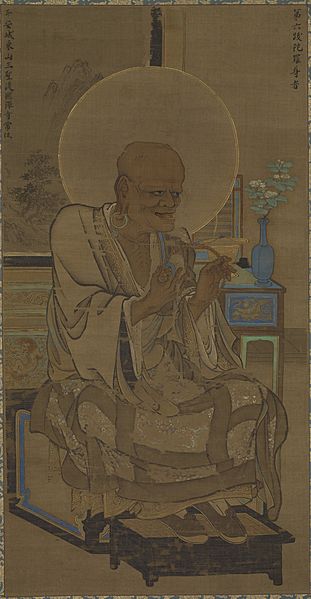Archivo: Japanese Arhat Painting

Description: Arhat (Bhadra), one of a set of sixteen Artist: Ryōzen (ca. 1328-ca. 1360). Ink and color on silk. H x W (image): 115.9 x 59.9 cm (45 5/8 x 23 9/16 in). Nanbokucho period, mid-14th century. A Japanese hanging scroll painting of a Buddhist arhat. Arhats, known in Japanese as rakan, were disciples of the Historical Buddha, Shakyamuni. In some temples in East Asia, they were worshiped along with the Historical Buddha at ceremonies held to honor the wisdom and truth of the Buddha’s teachings, which they helped to spread after his death. This painting depicts one of the sixteen arhats who were the Historical Buddha’s closest disciples. The halo signifies that he has achieved enlightenment and release from cycles of birth, rebirth, and attendant suffering. This set of sixteen paintings plus a central image of Shakyamuni are attributed to the artist Ryozen, a leader of the atelier at Tofukuji, a major Zen Buddhist monastery in Kyoto. From the Freer Gallery of Art and Arthur M. Sackler Gallery, the Smithsonian’s National Museum of Asian Art of Washington D.C. Author: en:User:PericlesofAthens Date: August 3, 2007
Title: Japanese Arhat Painting
Credit: Transferred from en.wikipedia to Commons. Freer Gallery of Art and Arthur M. Sackler Gallery, the Smithsonian’s National Museum of Asian Art Arhat (Bhadra), one of a set of sixteen
Author: Ryōzen (ca. 1328-ca. 1360) PericlesofAthens at English Wikipedia
Usage Terms: Public domain
License: Public domain
Attribution Required?: No
Usos del archivo
La siguiente página enlaza a este archivo:

